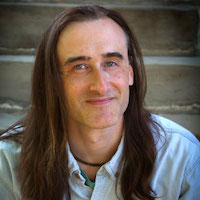How do we become someone other than who we are ?
Nature gives us a beautiful example of transformation in the butterfly, who starts as an egg, becomes a caterpillar, then cocoons and transforms into a completely different being than it started as.
I’ve heard that the transformation that happens during the cocoon happens because of imaginal cells—the caterpillar imagines itself new, and changes according to its vision.
There is an old saying that the only constant is change.
It is inevitable that life changes and that we are transformed by events and people in our life. Most times these encounters happen with pain and suffering. And even though a person may strive to live with the wisdom of Buddha, it is too easy to fall short.
“Pain is inevitable. Suffering is optional.” ~ Buddha
In my experience, suffering is not optional. We must, and do, suffer during the hardest transitions of life. And we will continue to do so until we learn to find contentment with the shadow side of life and find equanimity with pain. But how does a person stop suffering ?
Equanimity in all things—the balance of pain and pleasure.
The identification and belief that life must always be happy and pleasurable remains incomplete. During life transitions there is always pain, and the belief that a person must be happy in these times is cruel.
The loss of loved ones, the broken heart, the failed dream, the grief of death are all natural occurrences in life. It is natural and healthy to feel pain and to respond with all the rage, fury and anger that the heart feels during these times.
In feeling and embracing pain, the innocence of who we are remains pure.
The belief that these hard transitions in life must be accepted with equanimity is imbalanced and imbalancing. We have all had our fair weather friends who love us when everything is roses and sunshine…and then judge us as broken and are repelled by us when our life encounters tribulation.
The false friend will flee and push us away, the true friend embraces and loves us even when shadows are cast on our soul.
During a time in antiquity, there was a monk who ran a monastery—all the villagers would come to him for wisdom and understanding. He was also a great teacher, and had many disciples.
One day, a disciple was walking through town and through a window saw the monk in a house crying with a group of people. The disciple was offended, and when the monk returned to the monastery, confronted him with outrage. “How could you be so emotional and cry like that?” demanded the young learner. And the monk responded, “They had lost a child to death, how could I not ? ”
To demand ones heart and spirit to be at peace with the pain in life is suffering.
And to be liberated of the suffering is as simple as feeling the pain and allowing it to burn. In the crucible of hurting the pain becomes clean and the hurts turn to ash, just as kindling and logs become ashes in a bonfire. The more a person resists and hides from the causes of pain, the greater the suffering and the longer the pain endures.
Facing and embracing pain is equanimity, contentment with all life offers.
In pain, one often seeks to find solace. For our own self, we must face the searing truth of our own consequences and change how we approach life and love. And for others seeing a beloved in the crucible of life, soothing words, soulful service and loving presence will support them in their time of need.
When it comes to grieving, silence is often the only remedy for the one in pain and words that demand a person to feel otherwise will cause resentment and separation.
The caterpillar becomes a butterfly by dissolving in its cocoon—its transformation requires it to become pure liquid, and the DNA restructures the caterpillar into a butterfly.
The cocoon is essential to this process: the safe and nurturing environment that allows for a complete meltdown and subsequent restructuring. To be safe for somebody, and for oneself, is to relinquish judgment and blame and to remain accepting and receptive to what arises. And with trust, spaciousness and loving patience, the pain transforms and the spirit reemerges refreshed and renewed.
But first, we must imagine ourself as whole.
Without first believing and envisioning ourself in a new way, the transformation can never take place. The sight of being who we are is a guiding beacon, that then takes us into a cocoon, and through the process of transformation.
Just as the caterpillar imagines itself into a butterfly, who we imagine ourself to be is who we become.
Want 15 free additional reads weekly, just our best?
Get our weekly newsletter.
Assistant Editor: Terri Tremblett/Editor: Bryonie Wise
Photo: Jan Salerno
 Share on bsky
Share on bsky




Read 2 comments and reply